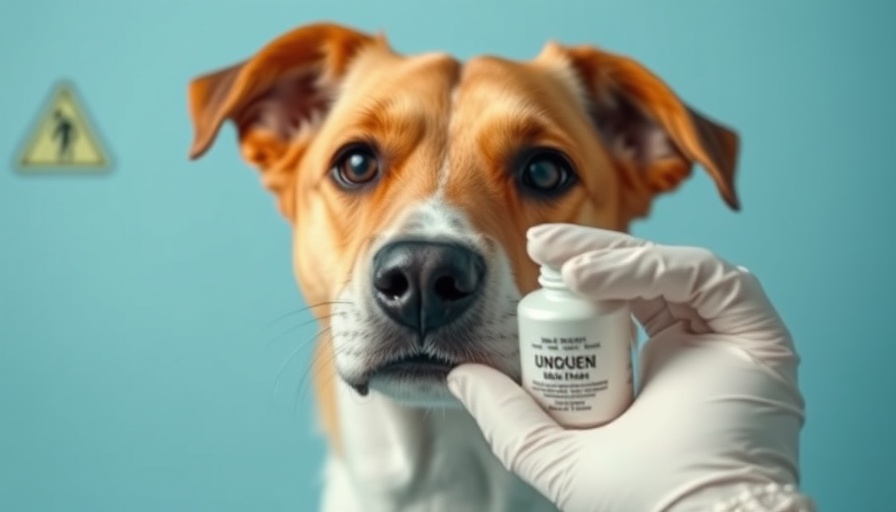
Flea and Tick Products: A Hidden Danger for Pets
As loving pet owners, we want to provide the best care for our furry companions, but what if the treatments we trust could do more harm than good? Recent findings regarding flea and tick products containing isoxazoline have raised significant concerns. These products are FDA-approved yet are reported to cause serious side effects in a staggering 66.6% of dogs and cats treated with them.
The Alarming Statistics: What the Research Shows
In a comprehensive survey, Project Jake, which analyzed the effects of these common treatments on pets, found that almost two-thirds of 1,594 dogs experienced an adverse reaction. This includes distressing symptoms such as muscle tremors, loss of muscle control, seizures, and, in the worst cases, death. It raises the question—how safe are these FDA-approved treatments that veterinarians continue to prescribe?
Understanding the Risks: What Are Isoxazoline Products?
Isoxazoline is a class of chemical insecticides used in various popular pet treatments, including Bravecto, NexGard, and Revolution Plus, among others. Following the FDA's 2018 alert regarding potential neurological risks associated with these products, it is surprising to see that many veterinarians still regularly recommend them. While the FDA deems these treatments safe for most pets, there remains a significant risk that every pet owner should consider.
The Veterinarians' Dilemma: Balancing Treatment and Safety
Despite the considerable risks highlighted in studies, veterinarians often face challenges when addressing clients' concerns about flea and tick prevention. Many feel that the benefits of these widely used products outweigh the potential adverse effects, a sentiment that might be true for pets without prior neurological issues. However, this perspective can overshadow the importance of how these adverse events affect pet owners personally, considering their pets’ health and happiness.
Pet Owners' Insights: A Call for Alternatives
Pet owners are increasingly expressing their concerns, and many are turning to safer, natural alternatives for pest control. Homemade pest deterrents, like sprays made from essential oils, can effectively repel fleas and ticks while minimizing the risk of severe side effects. By educating pet owners about these alternatives, we empower them to make informed decisions about their pets’ health.
What Pets Can Experience: Real Stories, Real Impact
One family's story illustrates the potential impact of these products. After giving their dog a popular isoxazoline treatment for pest prevention, the dog began to exhibit muscle tremors and disorientation. After seeking medical advice, they learned that other treatment options existed, leading them to a safer, more natural remedy. This experience prompted them to advocate for greater transparency in veterinary recommendations, emphasizing the need for open discussions around treatment options.
Moving Forward: What Should You Do?
As responsible pet owners, it is crucial to stay informed about the treatments we administer. If your pet is currently using an isoxazoline product, consult your veterinarian to explore possible alternatives. Engaging in conversations with your vet about side effects and the benefits of non-toxic options can help pave the way for a safer approach to flea and tick prevention.
Take Action: Stay Educated, Stay Engaged
Be proactive in your pet’s health! Subscribe to our newsletter for valuable insights, tips, and resources to better understand pet health, ensuring they lead happy, healthy lives. Empower yourself to choose the best products and treatments for your furry friends.
 Add Row
Add Row  Add
Add 




 Add Row
Add Row 


 Add
Add
Write A Comment